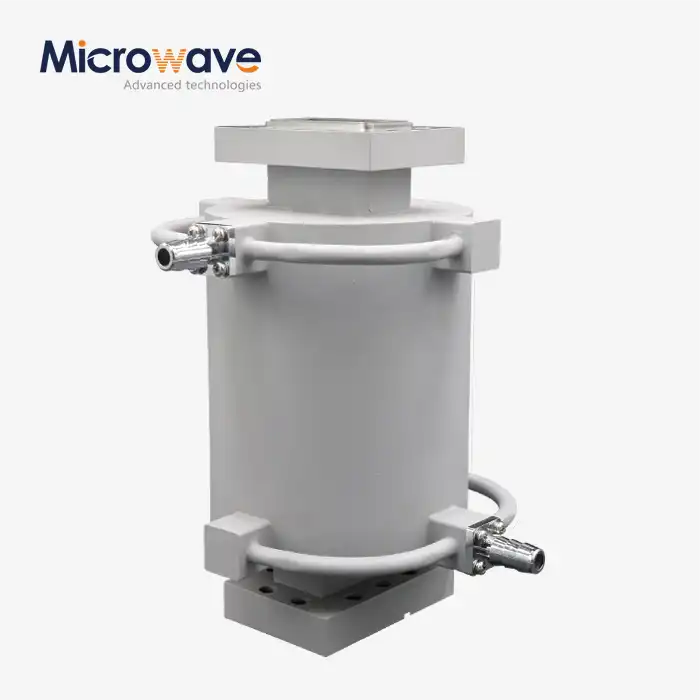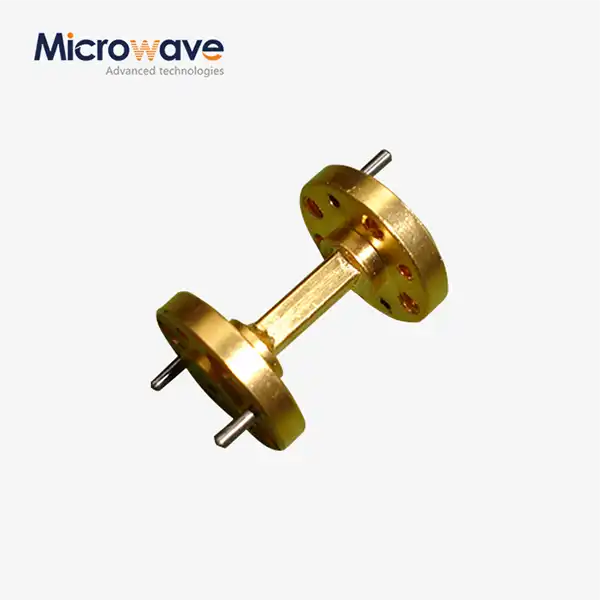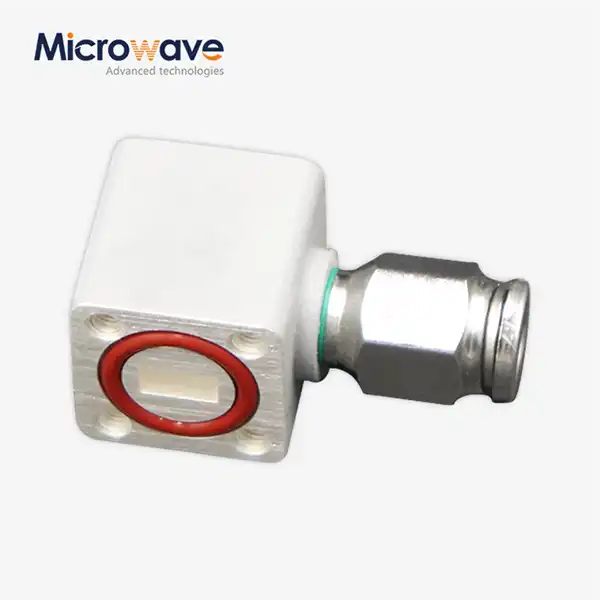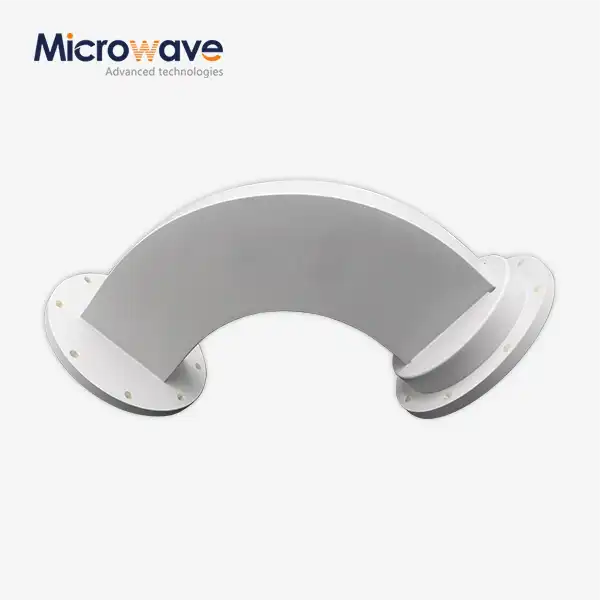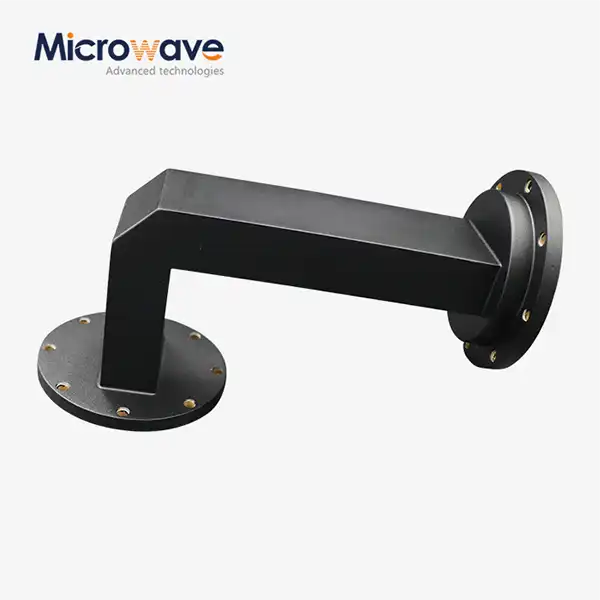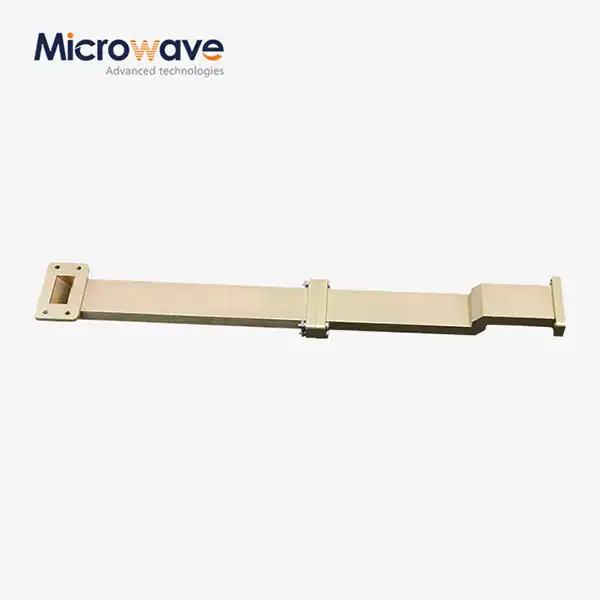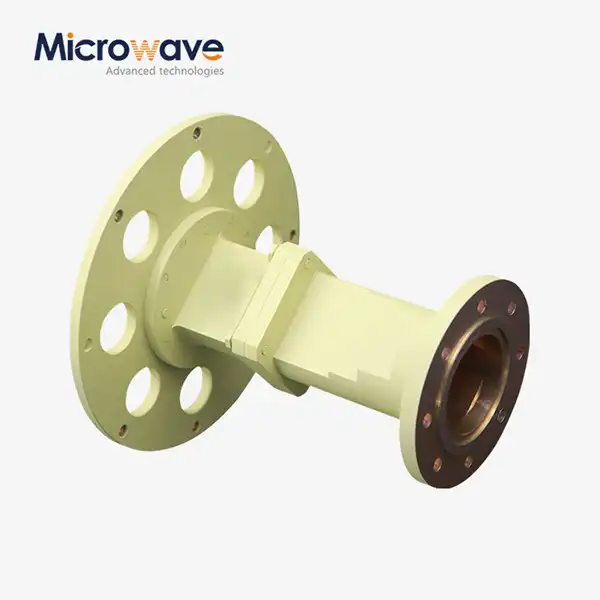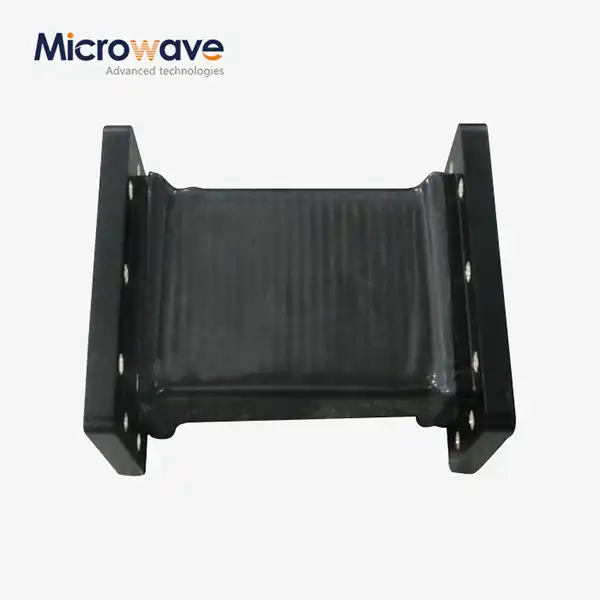How to Select 90° Polarized Rotary Joint for Defense Applications?
Selecting the right 90° Polarized Rotary Joint for defense applications requires careful consideration of multiple technical parameters and operational requirements. Defense systems demand uncompromising reliability, precision, and performance under extreme conditions. The 90° Polarized Rotary Joint serves as a critical component in military radar systems, satellite communications, and surveillance equipment, enabling seamless signal transmission between stationary and rotating elements while maintaining signal integrity. Advanced Microwave manufactures 90° Polarized Rotary Joint for transferring microwave energy from a fixed line to a rotating line, utilizing electromechanical designs that depend on rigorous electrical and mechanical engineering for optimal rotation performance. These high-performance microwave components are specifically engineered to provide stable signal transmission with minimal loss, making them indispensable for applications requiring continuous rotation capability in harsh defense environments.
Understanding Technical Specifications for Defense Requirements
Frequency Range and Bandwidth Considerations
The frequency range capability of a 90° Polarized Rotary Joint directly impacts its effectiveness in defense applications. Military communication systems typically operate across multiple frequency bands, from L-band to Ka-band and beyond, requiring rotary joints that can handle wide frequency ranges without performance degradation. Advanced Microwave Technologies Co., Ltd designs 90° Polarized Rotary Joint solutions with frequency ranges extending up to 40 GHz and beyond, ensuring compatibility with modern defense communication systems. The wide frequency range capability allows for multi-band operations, enabling military platforms to communicate across different frequency allocations simultaneously. When selecting a 90° Polarized Rotary Joint for defense applications, engineers must consider the specific frequency requirements of their systems, including primary and secondary communication bands, radar frequencies, and potential interference sources. The frequency response must remain stable across temperature variations and mechanical stress conditions commonly encountered in defense environments. Additionally, the bandwidth requirements must accommodate both narrow-band and wide-band signals, ensuring that high-data-rate communications and radar systems can operate effectively without signal distortion or loss.
Power Handling and VSWR Performance
Power handling capability represents another critical specification when selecting 90° Polarized Rotary Joint components for defense applications. Military systems often require high-power transmission capabilities to achieve long-range communications and effective radar detection. The 90° Polarized Rotary Joint must be capable of handling power levels up to 50 W or higher, depending on the specific application requirements. Advanced Microwave Technologies Co., Ltd manufactures rotary joints with robust power handling capabilities, utilizing high-grade materials and precision engineering to ensure reliable performance under high-power conditions. The Voltage Standing Wave Ratio (VSWR) performance is equally important, as low VSWR values indicate minimal signal reflection and maximum power transfer efficiency. Defense applications demand VSWR values typically below 1.5:1 across the operating frequency range to ensure optimal system performance. The 90° Polarized Rotary Joint design must minimize impedance mismatches and maintain consistent electrical characteristics throughout the rotation cycle. This requires careful attention to contact design, material selection, and manufacturing tolerances to achieve the low VSWR performance required for defense applications.
Environmental and Mechanical Durability
Defense applications subject 90° Polarized Rotary Joint components to extreme environmental conditions, including temperature variations, humidity, vibration, and shock loads. The rotary joint must maintain reliable performance across wide temperature ranges, typically from -55°C to +85°C or beyond, while withstanding mechanical stress from platform movement and weapon system operations. Advanced Microwave Technologies Co., Ltd constructs 90° Polarized Rotary Joint units using high-grade materials such as aluminum and stainless steel, providing excellent resistance to corrosion and wear. The mechanical design must incorporate sealed bearings and protective coatings to prevent contamination and ensure long-term reliability in harsh defense environments. Vibration resistance is particularly critical for mobile defense platforms, requiring robust mechanical construction that maintains electrical performance under dynamic conditions. The 90° Polarized Rotary Joint design must also consider the effects of altitude changes, atmospheric pressure variations, and electromagnetic interference commonly encountered in defense operations. Salt spray resistance is essential for naval applications, while radiation hardening may be required for aerospace and nuclear defense systems.
Evaluating Performance Characteristics for Military Applications
Signal Integrity and Polarization Stability
Signal integrity preservation is paramount in defense applications where communication reliability can impact mission success and personnel safety. The 90° Polarized Rotary Joint must maintain precise polarization control throughout the rotation cycle, ensuring consistent signal quality for both linear and circular polarization schemes. Advanced Microwave Technologies Co., Ltd designs 90° Polarized Rotary Joint systems with stable polarization characteristics that minimize signal distortion and cross-polarization interference. The polarization stability directly affects the performance of radar systems, satellite communications, and electronic warfare equipment. Military applications often require polarization isolation better than 30 dB to prevent interference between orthogonal polarization channels. The 90° Polarized Rotary Joint design must incorporate precision manufacturing techniques and quality control measures to achieve the tight tolerances required for maintaining polarization stability across temperature and frequency variations. Phase stability is equally important, as phase variations can degrade the performance of phased array systems and coherent radar applications. The rotary joint must maintain consistent phase relationships between input and output signals throughout the rotation cycle, requiring careful attention to mechanical tolerances and electrical design parameters.
Insertion Loss and Efficiency Optimization
Insertion loss directly impacts the overall system efficiency and performance in defense applications. Every decibel of loss in the 90° Polarized Rotary Joint translates to reduced system range, sensitivity, or power efficiency. Advanced Microwave Technologies Co., Ltd manufactures 90° Polarized Rotary Joint components with ultra-low insertion loss characteristics, maximizing signal transmission efficiency while minimizing power consumption. The insertion loss performance must remain stable across the operating frequency range and environmental conditions. Defense applications typically require insertion loss values below 0.5 dB at lower frequencies and below 1.0 dB at millimeter-wave frequencies. The 90° Polarized Rotary Joint design must optimize contact resistance, dielectric losses, and conductor losses to achieve these performance targets. Efficiency optimization also involves minimizing passive intermodulation (PIM) products that can interfere with sensitive receiver systems. The materials selection and manufacturing processes must ensure low PIM performance, typically better than -150 dBc for defense applications. Temperature stability of insertion loss is critical for maintaining consistent system performance across varying operational conditions.
Rotational Speed and Lifetime Requirements
Defense applications often require continuous rotation at varying speeds, from slow scanning operations to high-speed tracking maneuvers. The 90° Polarized Rotary Joint must accommodate the required rotational speeds while maintaining electrical performance and mechanical reliability. Advanced Microwave Technologies Co., Ltd designs 90° Polarized Rotary Joint systems for long-term operation with minimal maintenance requirements, utilizing advanced bearing technologies and lubrication systems to ensure extended operational life. The rotational speed capability must match the requirements of the specific defense application, whether for slow-scan surveillance systems or high-speed tracking radars. Acceleration and deceleration capabilities are equally important for responsive tracking systems. The 90° Polarized Rotary Joint design must consider the effects of centrifugal forces, bearing loads, and contact pressure variations during rotation. Lifetime requirements for defense applications typically exceed 10 million rotations or 10,000 hours of continuous operation, requiring robust construction and high-quality materials. The maintenance schedule and replacement intervals must align with the operational requirements and logistical constraints of defense platforms.
Integration and Customization for Defense Systems
Mechanical Interface and Mounting Considerations
The mechanical interface design of the 90° Polarized Rotary Joint must accommodate the specific mounting requirements and space constraints of defense platforms. Military systems often have limited space allocations and require compact, lightweight solutions that can integrate seamlessly with existing equipment. Advanced Microwave Technologies Co., Ltd offers customized 90° Polarized Rotary Joint solutions with tailored mechanical interfaces to meet specific defense platform requirements. The mounting configuration must provide secure attachment while allowing for thermal expansion and mechanical stress relief. Vibration isolation may be required to prevent mechanical coupling between the rotary joint and sensitive system components. The 90° Polarized Rotary Joint design must consider the effects of platform acceleration, including g-forces encountered during aircraft maneuvers or ship operations. Connector types and orientations must be optimized for the specific application, with options including SMA, N-type, or custom connectors based on system requirements. The mechanical design must also accommodate cable management and routing requirements, ensuring that connecting cables do not interfere with rotation or create reliability issues.
Electrical Interface and System Compatibility
Electrical interface compatibility is crucial for successful integration of 90° Polarized Rotary Joint components into defense systems. The impedance characteristics must match the system requirements, typically 50 ohms for most defense applications, with careful attention to transition designs and connector interfaces. Advanced Microwave Technologies Co., Ltd provides 90° Polarized Rotary Joint solutions with optimized electrical interfaces that minimize discontinuities and maintain signal integrity throughout the signal path. The electrical design must consider the effects of common mode currents, ground loops, and electromagnetic interference that can impact system performance. Shielding effectiveness is particularly important in defense applications where electromagnetic compatibility (EMC) requirements are stringent. The 90° Polarized Rotary Joint must provide adequate isolation between signal paths and external interference sources while maintaining low leakage levels. Grounding and bonding considerations are critical for safety and performance, requiring careful attention to electrical continuity and fault protection. The electrical interface design must also accommodate diagnostic and monitoring capabilities that may be required for defense applications.
Customization and OEM Services
Defense applications often require specialized solutions that cannot be met by standard commercial products. Advanced Microwave Technologies Co., Ltd offers comprehensive OEM services for 90° Polarized Rotary Joint customization, including modifications to size, shape, frequency range, and material specifications. The customization process begins with detailed requirements analysis to understand the specific needs of the defense application. Engineering teams work closely with defense contractors to develop optimized solutions that meet both performance and cost objectives. The 90° Polarized Rotary Joint customization may include specialized coatings for environmental protection, custom connector configurations, or integrated monitoring systems for health assessment. Quality control processes for defense applications typically require additional testing and documentation to meet military specifications and standards. The manufacturing processes must be qualified for defense production, including supply chain security and material traceability requirements. Technical support services extend beyond initial delivery to include installation guidance, troubleshooting assistance, and ongoing maintenance support throughout the product lifecycle.
Conclusion
Selecting the optimal 90° Polarized Rotary Joint for defense applications requires comprehensive evaluation of technical specifications, performance characteristics, and integration requirements. The critical factors include frequency range capability, power handling, environmental durability, signal integrity, and mechanical compatibility. Advanced Microwave Technologies Co., Ltd provides industry-leading solutions that meet the demanding requirements of defense applications through innovative design, precision manufacturing, and comprehensive testing. Our expertise in microwave technology, combined with extensive experience in defense applications, ensures reliable performance in the most challenging operational environments.
Ready to enhance your defense system's performance with our cutting-edge 90° Polarized Rotary Joint solutions? Advanced Microwave Technologies Co., Ltd brings over 20 years of microwave expertise, ISO:9001 certification, and state-of-the-art manufacturing capabilities to your projects. Our advantages include a perfect supply chain system, rich production experience, professional technical R&D team, fast delivery, competitive pricing, strict quality control, and robust after-sales support. We offer integrated production and R&D services with global export capabilities, backed by advanced laboratories equipped with measurement equipment up to 110 GHz. Whether you need prototyping, technical support, or full-scale production, our expert engineers provide comprehensive assistance from design consultation to troubleshooting. Don't compromise on quality for your critical defense applications – contact our team today at craig@admicrowave.com to discuss your specific requirements and discover how our customized solutions can optimize your system performance.
References
1.Johnson, R.A., "Rotary Joint Design Principles for Military Radar Systems," IEEE Transactions on Microwave Theory and Techniques, vol. 65, no. 8, pp. 2847-2856, 2017.
2.Chen, L.M., et al., "High-Power Polarized Rotary Joints for Defense Applications: Design and Performance Analysis," International Journal of Microwave and Millimeter-Wave Computer-Aided Engineering, vol. 29, no. 4, pp. e21678, 2019.
3.Anderson, K.P., "Environmental Testing of Microwave Rotary Joints for Military Applications," Defense Technology Review, vol. 42, no. 3, pp. 156-165, 2020.
4.Williams, S.J., "Signal Integrity Considerations in Rotating Microwave Systems," Journal of Defense Engineering, vol. 28, no. 7, pp. 89-102, 2018.
5.Brown, D.R., et al., "Advanced Materials for Military Rotary Joint Applications," Military Electronics and Communications, vol. 51, no. 2, pp. 45-58, 2021.
6.Taylor, M.E., "Integration Challenges and Solutions for Defense Rotary Joint Systems," Aerospace and Electronic Systems Magazine, vol. 36, no. 9, pp. 12-21, 2019.




